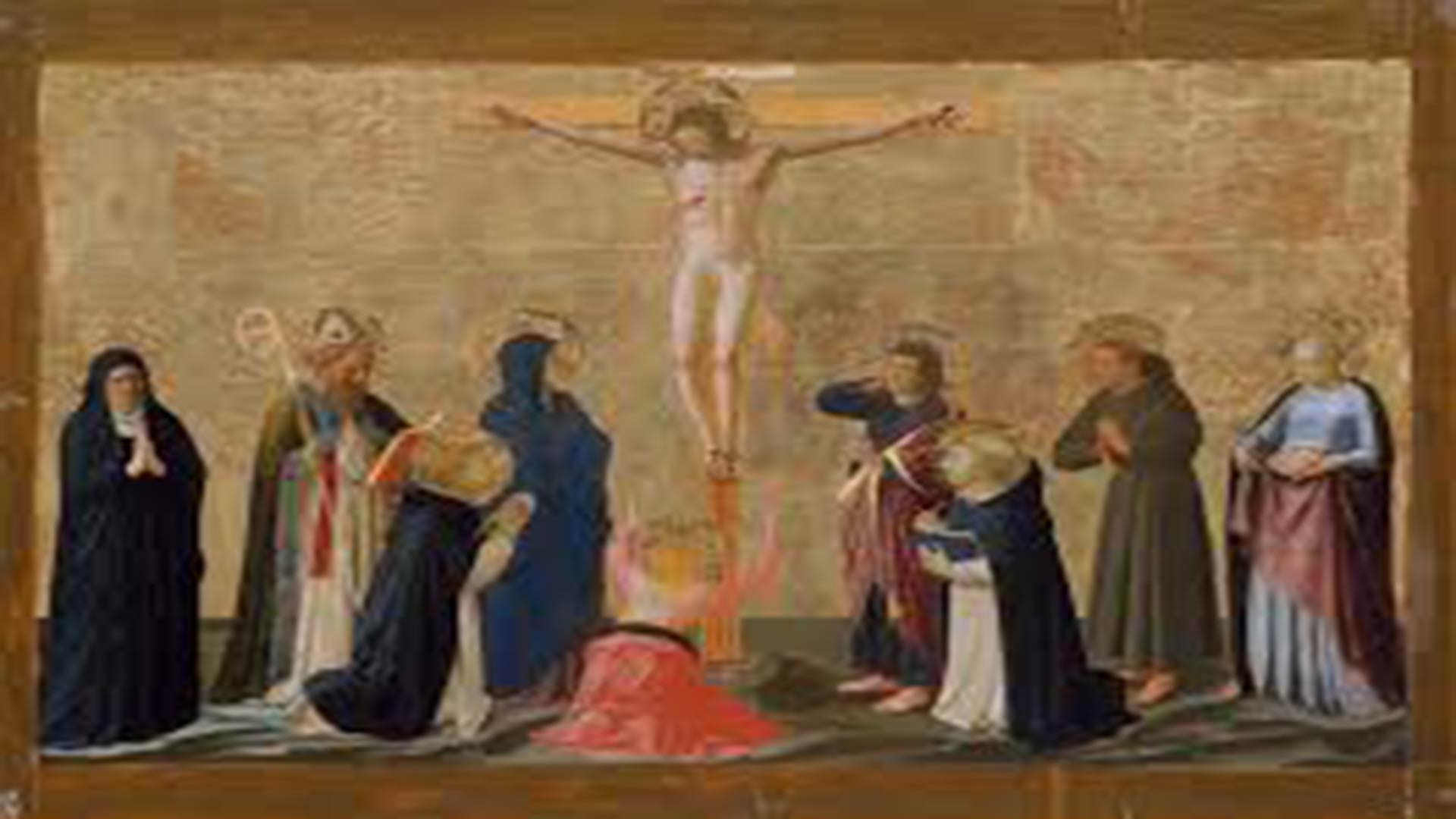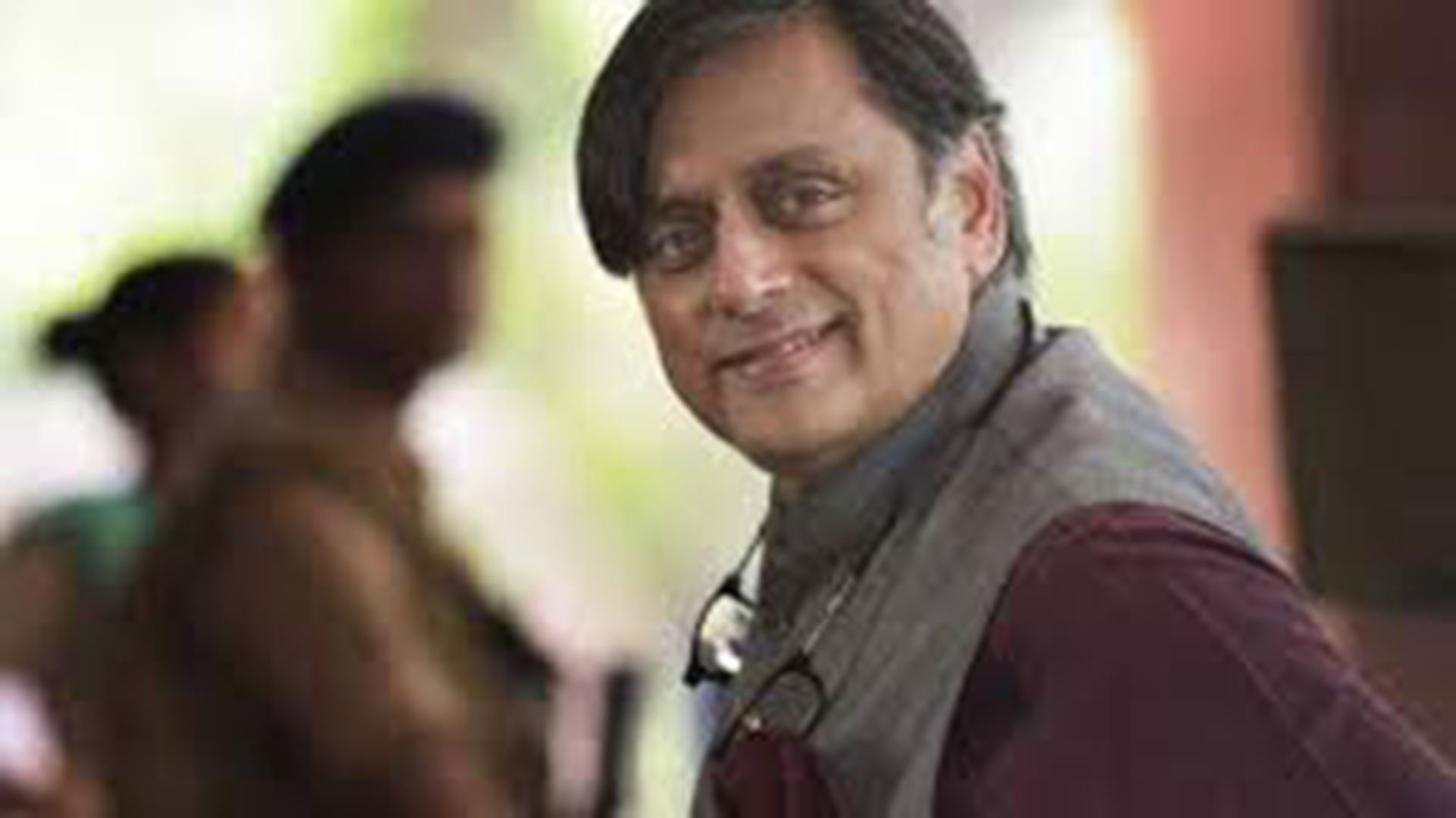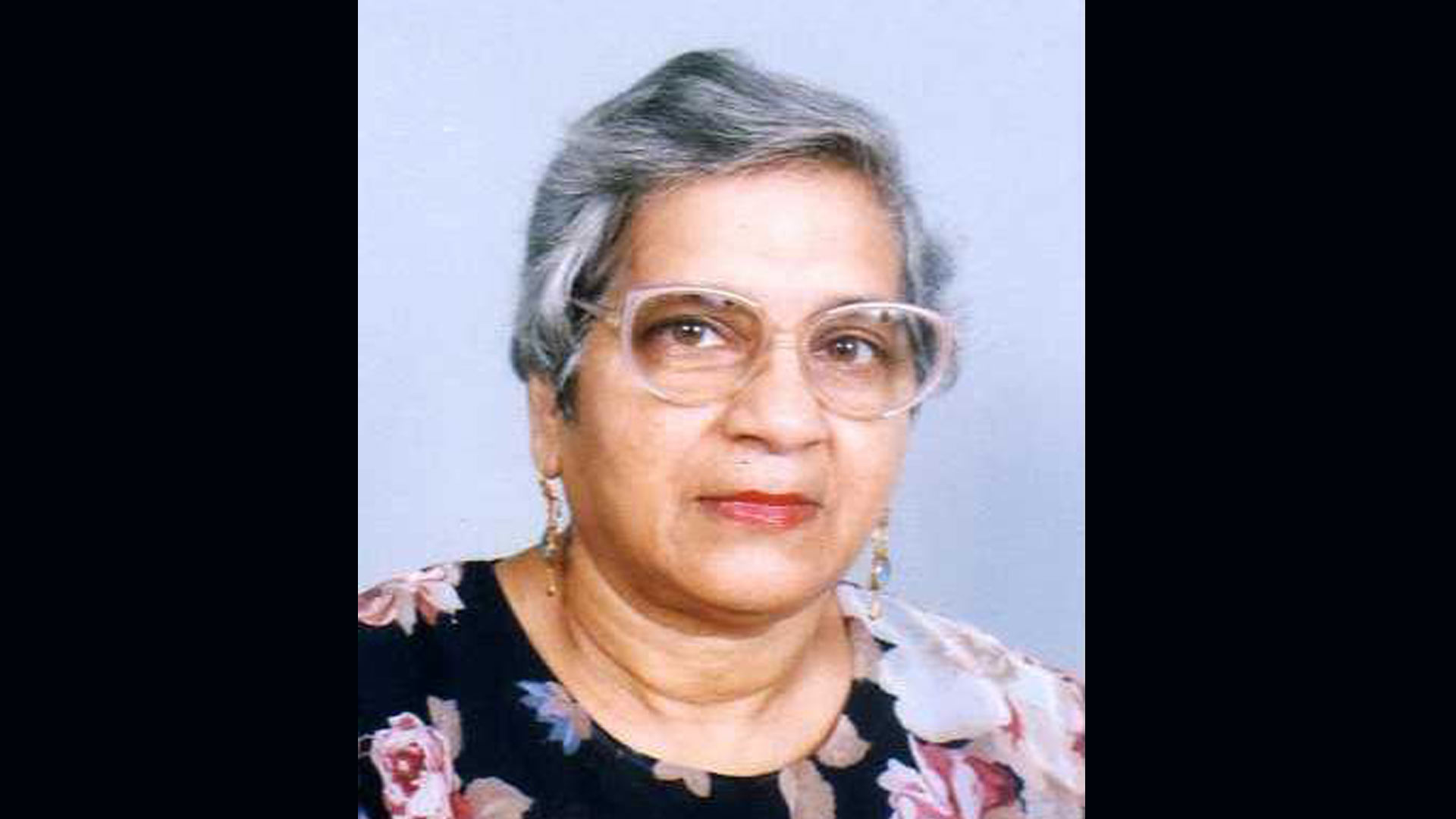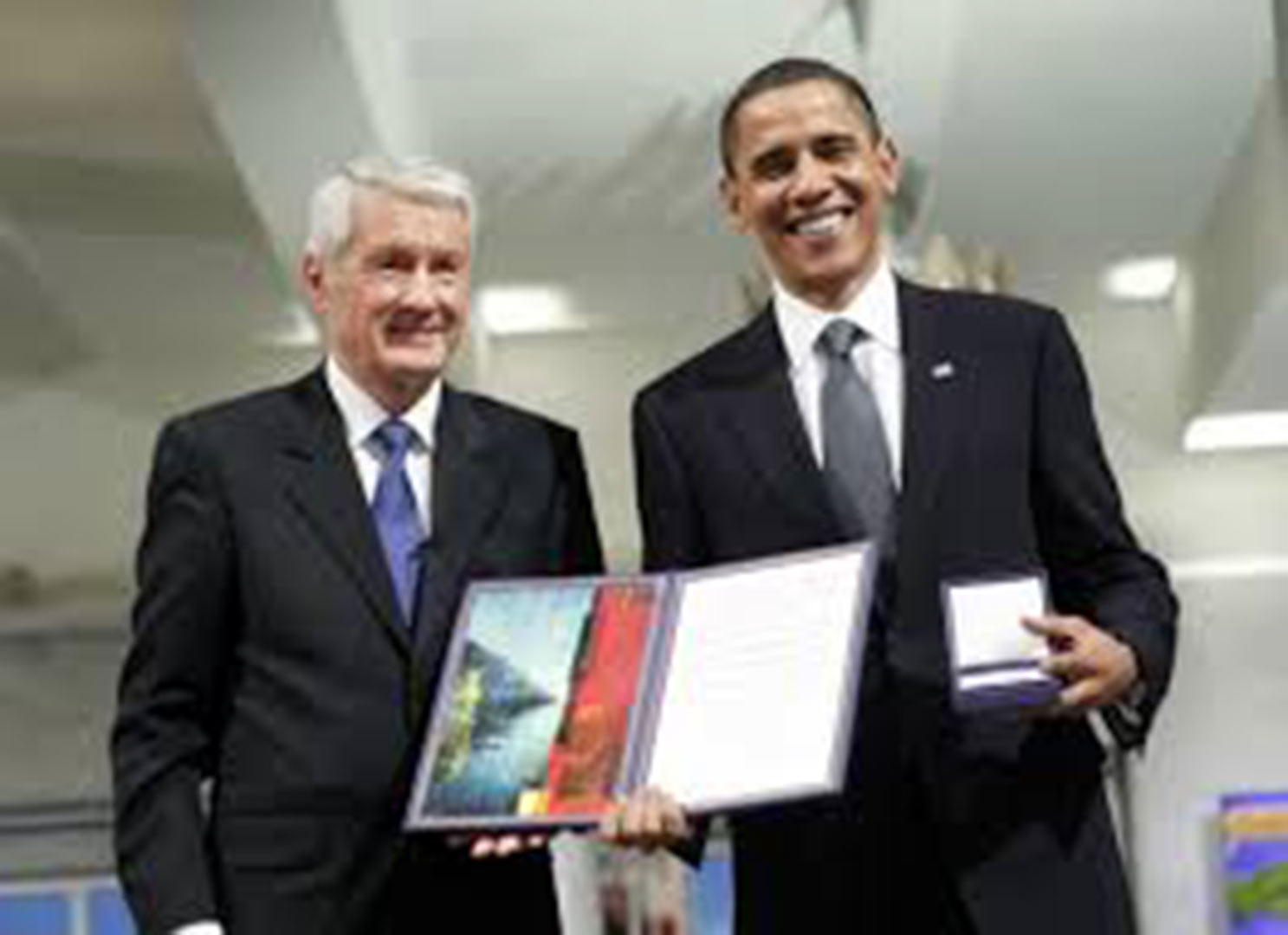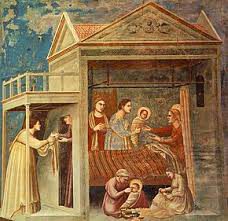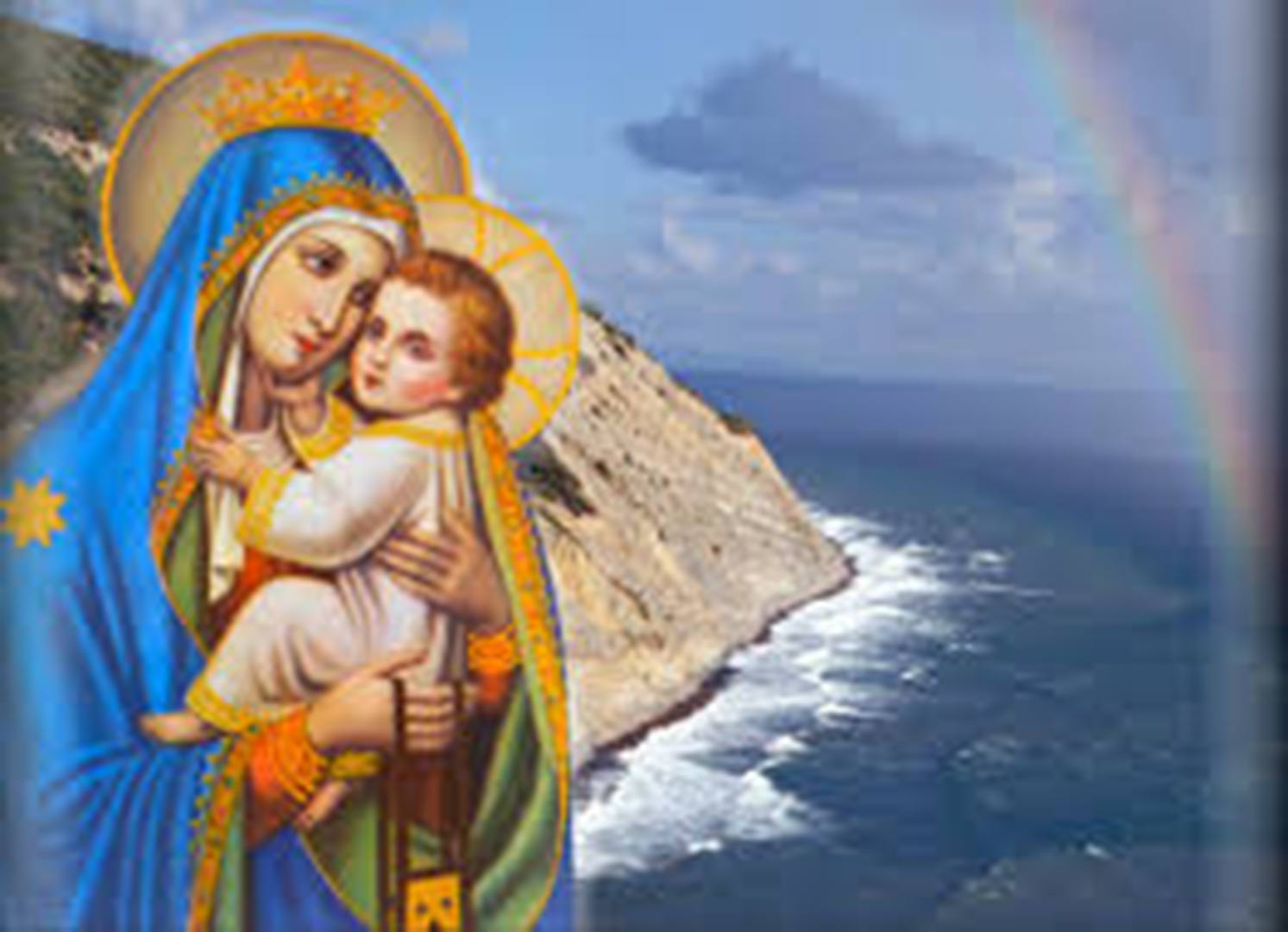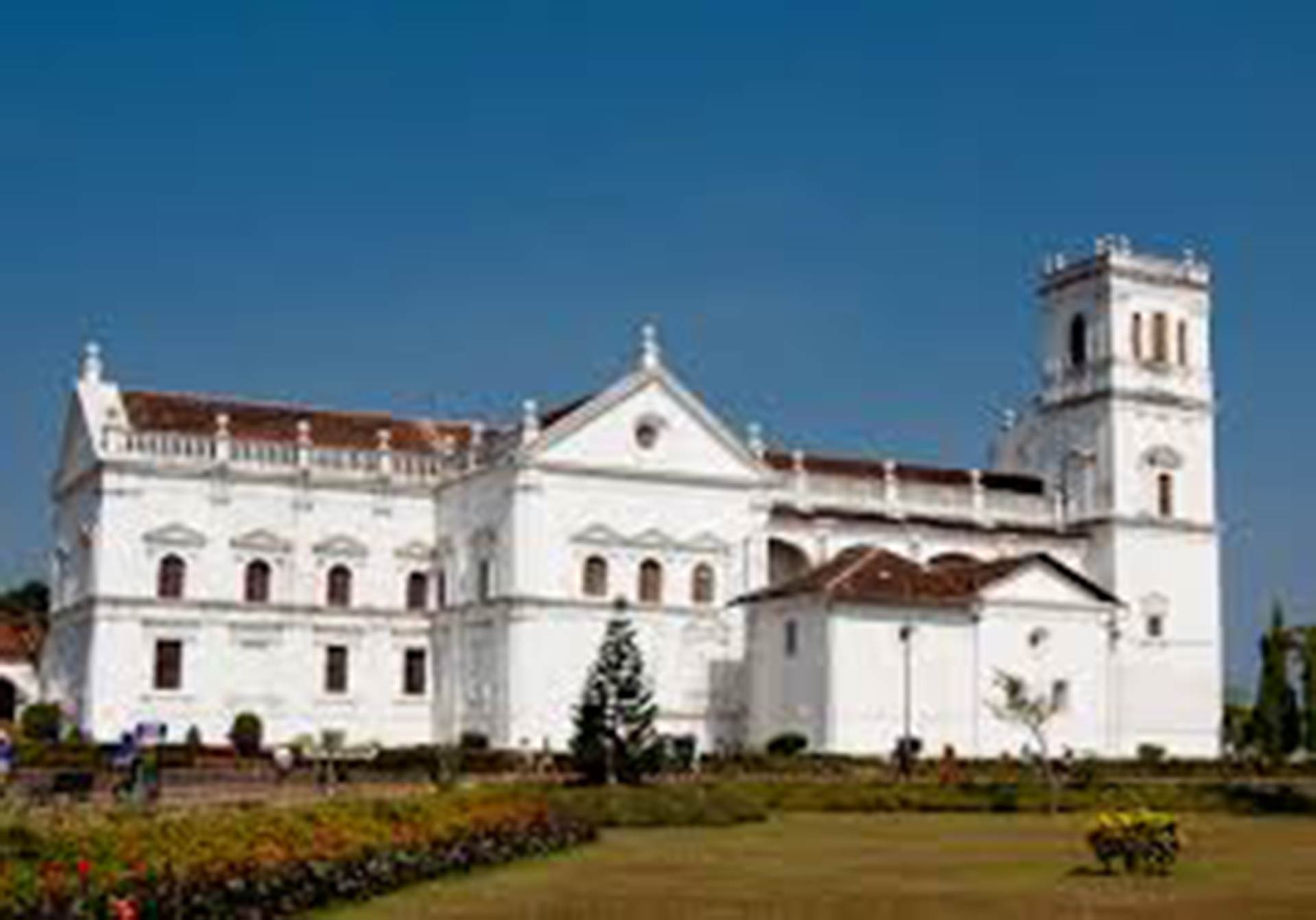Crucifying the King, in Meta-history
April 16, 2011Anti-Semitism,Felix culpa,Ronald Lauder,Nostra Aetate,Pope Benedict XVILent
In the last few weeks the world witnessed momentous political changes after several national governments went crumbling like packs of cards. In some of those countries legitimate monarchies were overthrown and in others self-styled royals were summarily ousted.
There is a sense of déjà vu in those events. They are child’s play if we consider that two thousand years ago the Man who was God was crucified by his countrymen. The Creator of the Universe was destroyed, the Giver of Life put to death. The King of Kings who had deigned to visit his people was unceremoniously eliminated from the face of the earth.
In contrast with worldly kings, who generally collapse under the weight of their own misdeeds, Our Lord Jesus Christ was executed without good reason, or rather, because he was righteous. There were no prolonged hearings, no intention to ascertain the truth, no mercy…. There was only injustice, lies, brutality, ingratitude…. The annihilation of Our Lord was without a doubt the greatest crime ever perpetrated in history, and shall remain so to the end of times.
It was also one earth-shattering event that the Chosen Race became answerable for; it was an irreversible act that the followers of Christ have had to painfully endure ever since. No doubt it caused the Church to have a mental block against the Jewish people, who themselves held one against the Egyptians; but, thankfully, the bitterness was not of catastrophic proportions. Neither did the Church regard the Gospels as a basis for anti-Judaism nor did individual Christians persecute the Jews. Yet, the head of the World Jewish Congress, Ronald Lauder, read insidiously into it all, when, as perpetrators of the crime, it was for the Jews to apologize to the Christians, and not the other way around.
Well, this can be debated till the end of times; the undeniable fact is that neither side was proactive in dissipating ill feelings. It is not for us here to recount the long story of that failed relationship; but it is pertinent to note that Pope Pius XII made personal and official efforts to mitigate anti-Semitism in Germany, or what Churchill dubbed “a monstrous tyranny, never surpassed in the dark, lamentable catalogue of human crime.” In 1964, Vatican Council II for the first time issued a document, Nostra Aetate (‘In Our Times’), repudiating the notion of collective Jewish guilt for Jesus Christ’s death. And recently, in his second volume of Jesus of Nazareth, Pope Benedict XVI ascribed that guilt not to “the Jewish people as a whole” but to the “aristocracy of the temple” and the “masses” who had acclaimed Barrabas, and whose cries were endorsed by their Roman rulers.
Thus, the Catholic Church, albeit the aggrieved party, moved on beyond individuals and races, to reflect on what was indeed a watershed in the history of humankind! The superhuman magnitude of the crucifixion and death of Iesvs Nazarenvs Rex Ivdaeorvm made it an event infinitely more critical than the fall of the most magnificent of the world’s emperors! In Jesus’ death humanity had a flashback of history: Eden became Gethsemani and Satan, Judas. But the dark clouds of Good Friday had a silver lining to them: Whereas at Eden death had stuck into the Tree of Life, at Calvary life sprang up at the Tree of Death. It was God unmistakably reaffirming His supremacy over Creation – a tying up of loose ends in meta-history.
While we have an occasion to relive this saga, year after year, through the sorrowful spectacle of Lent and the glorious phenomenon of Easter, an honest introspection would quickly show that we need no distant scapegoats for the death of Jesus: As a human race we ourselves are those proverbial Jews and Romans transposed to the twenty-first century. Human nature has run for aeons, connecting thousands of generations through good and evil, so we can’t ever claim that we would have been any different as contemporaries of Jesus. We often reject the Message and the Messenger; we crucify Him every single day of our lives.
It is therefore important for us to turn a new leaf by repenting for our faults. Adam and Eve’s was a felix culpa, which won us so great and so good a Redeemer; but I’m afraid our faults don’t qualify in the same way, so we shall have to always say Nostra culpa, nostra culpa, nostra maxima culpa. And if we wish to fully partake of God’s salvation plan, there is no better way than to embrace the Cross – to make the way of the Cross our way of life – which is not to invite but only quietly accept the myriad forms of suffering through the ups-and-downs of our daily life. It will give us at least a pale sense of the Crucifixion and an occasion to atone for our maxima culpa in our own little way.
No defeated king ever returned to his pristine splendour. Only Our Lord did! If we keep the faith, we too will have a share in the glory that was His on the third day and will be so for ever more.
(Renovação, Vol. XL, No. 8, 16-30 April 2011)
Crucifying the King
In the last few weeks the world witnessed cataclysmic political changes after several national governments crumbled like packs of cards. In some of those countries legitimate monarchies had to step down and in some others self-styled monarchs were summarily overthrown. In a way, one can say that they crumbled under the weight of the long-term social, economic and political exploitation of their people; but surely none of the rulers would have seen the end unless they were forcefully removed from power.
These are overwhelming events, yet have a touch of déjà vu. In fact, it is child’s play if we consider that, two thousand years ago, the man who was God was put to death on the Cross. The King of Kings who had deigned to visit his people was most unceremoniously removed from the face of the earth. There were no long-drawn-out hearings; there was no interest in arriving at the full truth; there was no mercy…. Rather, there was, and in abundance, injustice, brutality, ingratitude. The annihilation of Jesus Christ was undoubtedly the greatest crime ever perpetrated in history, and shall remain so till the end of times.
How does this event become a turning point of great significance to humankind – immeasurably more than that of the fall of any worldly monarch? To begin with, through Jesus’ death, God rewound history: Eden became Gethsemani and the Satan who tempted our first parents returned as the Judas who betrayed Jesus. And whereas at Eden death stuck into the Tree of Life, at Calvary life sprung up at the Tree of Death! And this symbolic tying of loose ends in meta-history was not without a silver lining – in that God returned through his Resurrection to establish His supremacy over His Creation.
This story, relived by us year after year through Lent, finds its crowning glory in Easter, the ‘bedrock of our faith’, as St Paul has called it, for without it we are nothing. Now, if Jesus who is God could have been subjected to such an ignominious death, what makes us, poor mortals, wish to evade it? We are therefore duty-bound to partake in God’s suffering in our own little ways, to experience on our flesh the crucifixion of our King. And appreciating all of this in the midst of our daily ups-and-downs – or say, living our life in hope – will help us to share in the same glory that was once His on the third day and will be so forever more.
(Editorial, The Stella Maris Bulletin, Vol. 4, No. 3, April 2011)
A Ray of Hope from a faith formation seminar
February 16, 2011Stephen K. Ray,Tradition,Apologetics,Mary,Papacy,G. K. Chesterton,Eucharist,Catechism of the Catholic Church,Pilar,Life of Prayer,Steve Ray,Magisterium,The Essential Catholic Survival,Scripture,Apologists,Goa,Salvation,Francisco Correia Afonso,Crossing the Tiber,Character and Commitment,Archdiocese of Goa,Filipe Neri Ferrão,Confidence in GoaReligion,Seminar Review
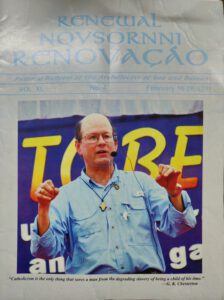
My mind races back to 1977-78, when my siblings, friends and I attended a prayer meeting spread over three evenings, at the Azad Maidan, Panjim. We went with some trepidation since it was a Protestant pastor giving his testimony. What finally clinched it for us was that stirring question “What does it profit a man if he gains the whole world but loses his soul?” which we saw splashed in bold, white lettering across a dark blue banner. Hadn’t a young and impetuous man once been transfixed by those very words? So, reassured by the familiar image of Goenchó Saib, we skipped our playtime and went.
The huge backdrop spanning several columns of the then Albuquerque memorial must have been designed to rope in naive Catholics; its text was ‘gripping’, because we teenagers were groping. In the end the meet did not satisfy us. Notwithstanding the histrionics that mark Protestant gatherings, we did not find the living bread and water that we were seeking; we only found ourselves gazing at Christian teaching through cracked crystal – which is what Protestantism is.
But the good side of it is that it whetted our appetite for manna that only the Catholic Church can give. We realized it was the same old story of not being grateful for what we have until we have lost it – which is the larger point that Stephen K. Ray, popularly known as Steve Ray, drove home at a faith formation seminar titled ‘It’s Great to be a Catholic!’ The event, organized by our Archdiocese at Pilar College Grounds, on 22-23 January 2011, was attended by some two thousand laypeople from across Goa. Given below are highlights of the issues covered by Ray: some treasured doctrines of the Catholic Church; and why dedicated apologists are the need of the hour.
Catholic Treasure
Can we afford to just stand and stare, or be ‘Sunday Catholics’ at best, when there is so much about the Catholic Church to learn and share?
Ray, a former Baptist, began with a moving testimony on how he ‘came into the Catholic Church backwards’. He was attracted by the solidity of the Catholic teaching vis-à-vis the inanity of worship, the skewed interpretation of the Bible, and the relativity of moral teachings, rampant in the Baptist church. Finding it ironical that Catholics, who are privy to doctrinal treasures, “don’t share their faith”, he urged the laity not to regard the faith as something private but rather to proclaim it proudly, for “we are duty-bound to be good evangelists.” He pointed to the USA, where the Catholic Church is growing from strength to strength, in number and quality.
Passing on to ‘Scripture, Tradition and the Magisterium’, all of which the anti-Catholics love to hate, Ray quoted Pope Paul VI, who endorsed the “fifth Gospel” – Israel – which we have to believe in so as to understand Catholic teaching in its entirety. We cannot afford to “throw out the Old Testament, like old bread” because therein lies the foundation of our faith, and of which the New Testament is the fulfilment. Quickly reminding critics who bank solely on the Bible and decry history that the Bible itself is a product of history, the Apologist galloped his way to Caesarea, Phillipi, to uncover the eloquent backdrop to Jesus’ idea of Peter as the ‘Rock’. “If the Catholic flock understood this, none would ever leave the Church,” he said, adding half in jest, “Sheep are stupid, and leave; only the smart ones remain!”
Ray dealt at length with the ‘Papacy: Apostolic Succession and Infallibility’, which is the subject of his book Upon the Rock (Ignatius Press, 1999). He demanded to know why the Papacy is thought by a few to have ended with Peter, when a presidency does not end with the death of a President! He stated that the Pope is ‘the Holy Father’, not because he is sinless but because he is ‘consecrated, set apart for a holy purpose.’ He remarked that, curiously, the Pope is a source of unity for all Christians: for those who believe in him as well as for those who gun for him in unison!
Significantly, the theme inscribed on the backdrop was “You are Peter and upon this Rock I will build my Church, and the gates of Hell will not prevail against it.” (Mt 16: 18) Ray confessed that, as a Baptist preacher, he would pick Catholics like a ripe apple with his standard objection, ‘But where do you find the word Pope in the Bible?’ Now, as a convinced Catholic he counters that with ‘But where in the Bible is it said that you must find everything in the Bible?’ This quip soon turned into a cheery refrain, echoing under the massive blue-and-white pandal: it now serves as an opening rebuttal for budding apologists to consider.
‘Mary’ was another keystone of the Catholic Church that Ray focussed on. To decipher this “great problem for the Protestants”, Ray transported us from the earthly Jerusalem to the New and Eternal City. From the cave (now St Anne’s Church) where Mary was “immaculately conceived” and endured a “tough Jewish life”, we were guided through the awe-inspiring Annunciation and Visitation (7 days’ walk in the Jordan valley, 160 km in 45º C) to the Nativity and the Holy Family’s vicissitudes in Nazareth (to be seen as “God endorsing the dignity of labour”).
Reflecting on the glories of Mary, Ray considered her life post Joseph’s death when Jesus was but 12 years old. It was she who set in motion her Son’s ministry, at Cana, and this established her centrality in God’s plan of salvation. At the time of Jesus’ death “God rewound history”: Eden became Gethsemani and Satan returned as Judas; and whereas at Eden death stuck into the Tree of Life, at Calvary life sprung up at the Tree of Death! And in all of this Mary’s role was unmistakable: her Son became the New Adam and she the new Eve; she revealed herself as the Ark of the New Covenant; was present at the birth of the Church in the Upper Room; and having been assumed into Heaven and crowned Queen (reminiscent of Solomon who enthroned his mother), she remains our supreme intercessor.
Speaking on ‘Eucharist: Source and Summit of Catholic Life’, Ray stated that its definition had remained unchanged for 1500 years until “a bunch of Protestants who called themselves magisterial reformers” began to find fault with it – and then couldn’t come to an agreement on it themselves! This led to hundreds of definitions of “This is My Body… and Blood”. He stressed the need to go back to the typology found in the Old Testament, since it prepares us for the Eucharist, from Melchizedek to Malachi. In the New Testament, Bethlehem (meaning ‘House of Bread’, and where Mary “delivered the Bread of Life”) and the Passover Meal are significant.
Ray pinpointed John 6: 63 as a thorn in the side of the Protestants. He reiterated that the Eucharist is more than just a meal – it’s a sacrifice; and the table of the Lord is more than an ordinary table for that meal – it’s the altar for that sacrifice. Jesus meant it precisely that way – truly, not symbolically – but the Jews were unable to stomach it, and so rejected the Son of God.
Finally, Ray did not mince words on the thorny issue of ‘Salvation’. The first sentence of § 1257 of the Catechism says that “The Lord himself affirms that Baptism is necessary for salvation,” and then the last one: “God has bound salvation to the sacrament of Baptism, but he himself is not bound by his sacraments.” He categorically stated that we gain salvation not through the merit of our good works, or by faith “alone” (as Luther insisted), but by God’s grace and mercy. He picturesquely termed Purgatory as the “front porch of Heaven”. Urging the faithful to believe in Jesus, he noted that the opposite of “to believe” is “to disobey” (Jn. 3: 36).
Historic Milestone
Ray spoke with knowledge and verve, wit and humour. Two question hours were part of the agenda, which saw Ray fielding a wide variety of issues – from the meaning of ‘apologist’ to indulgences; the New Age movements; modest attire; home schooling; ‘property gospel’; contraception; celibacy; tithes; healing services; alternative medicine; and Heaven and Hell. When unaware of a regional peculiarity (viz. the existence of a sect named ‘Believers’ in India) he was eager to learn. He was sharp and answered questions with precision; only once did he fail to disentangle a long list (ecumenism, inter-religious dialogue, etc.), inadvertently, for sure.
Ray is admirable, his style simple and direct, his speech accessible. Above all, he has the force of conviction stemming from an intimate experience of a living God and years of learning and practice – of which have the power to revive a sluggish faith. His approach is “pastoral – not combative or harsh”, as he says of his own book, Crossing the Tiber (Ignatius Press, 1997), a world bestseller, which recounts his momentous decision to turn Catholic.
The Apologist touched our hearts. Braving the heat of the noonday sun, the audience listened with rapt attention, all seated in a shamiana that felt like a makeshift church (but definitely way above any that our ancestors must have witnessed in their primitive, improvised structures). On one occasion, in a post-lunch session, some of us were at the end of our tether, even while the speaker was adjusting the collar mike to begin his talk; and, quite unexpectedly, there came a cool and refreshing breeze – like the Holy Spirit making his presence felt! – and blew away all our troubles.
While, on the one hand, Fr Manuel Gomes’ able interpretation of the talks into Konkani was reminiscent of a similar task that Fr Joseph Vaz undertook for two famous preachers from Portugal at the retreats they conducted in the Goan countryside; on the other, the entire rustic setting of our seminar made us wonder how it must have felt to be listening to pearls of Christian doctrine as they first cascaded from the lips of Our Lord, be it on the mount, by the sea or in the Jewish town.
There is no doubt that Goa was ripe for Ray. We gratefully acknowledge our Archbishop Filipe Neri Ferrão’s personal endorsement of his visit. Not only was this symbolic of a ‘refresher course’ in Catholicism five centuries after the Portuguese missionaries planted the seed; but, more importantly, it was a fitting response, although long overdue, to the historical and contemporary dangers that, from within and without, assail the former bastion of Catholicism in the East. This was perhaps an unprecedented event, and most certainly a historic milestone in the life of our venerable Archdiocese.
In a brief tête-à-tête, our enthusiastic and friendly Archbishop – who, I must highlight, sat through both days – described the faith formation seminar as “refreshing”. He appreciated Ray’s “way of presenting” matters and found it “great to listen to a layman preach”. He had particular regard for him for being “very loyal to the Church.”
For his part, Ray appealed to laypeople and priests alike not to shred the Body of the Church, and endorsed the wisdom of staying under the authority of the Bishop.
The Road Ahead
Here was Apologetics in action, perhaps in a long time! A vivacious Goan apologist, Francisco Correia Afonso, once said something to this effect: We need no apologetic Christians but Christian apologists!
In fact, the Goan priest and lay apologists first emerged a century ago, in the wake of the anti-Catholic and anti-clerical republican regime; they exerted themselves in the service of the Church for five decades, after which there was a lull, because the time had come – as another great convert-apologist G. K. Chesterton put it, albeit with reference to another time and place – “when the Christian [was] expected to praise every creed except his own.”
At Pilar both the Apologist and the Archbishop felt it necessary to pray for a new batch of Defenders to emerge. While Apologetics might seem only a matter of learning to explain and defend our Faith, it is as much a matter of confidence, prayer and commitment. This cannot be a solo venture; the faithful must fervently desire it all together. So can we get our act together? And how do we create the right conditions?
Especially for an apologist, learning should not only mean acquiring general knowledge, but more importantly, acquiring a Catholic perspective on that body of knowledge. For the specialized knowledge required, The Essential Catholic Survival Guide (Catholic Answers, San Diego, 2005) suggests a roadmap beginning with the Bible, and going on to the Catechism, which will help interpret the material of the Bible in the context of what the Church has historically understood it to mean. Then would come a study of the objections made against our faith by anti-Catholic literature and the responses to them. Finally, to successfully rebut both non-Catholics and anti-Catholics one would have to master the arguments put forth by Catholic writers.
But what kind of people would accept the challenge of making time for religious studies and putting them on par with their secular studies? Only they may care to do so who have a profound confidence in God and exercise this virtue amidst the prosaic realities of life. Those of us imbued with materialism, who trust ourselves better than we do God and have no qualms about taking short cuts to ‘success’, oblivious of principles and unmindful of consequences – we are called to do a rethink.
If our preachers and catechists became more spirited, more apostolic, and less bureaucratic, for many confidence in God would not remain just a theoretical proposition; if our small Christian communities interpreted the Bible not as ‘free thinking Catholics’ but strictly as taught by the Mother Church, sects would not flourish; if adult catechesis were taken up with a sense of urgency, our households would become nurseries of apologists; if our faith were nourished beyond Confirmation or the ‘booster dose’ received at Marriage – and if the Sacraments were used optimally – we would never run the risk of having a faithful devoid of faith or confidence in God!
Our learning and confidence can be sustained only by a life of prayer. Whereas we can do nothing on our own, with God there is nothing we can’t do. This requires of us to pray and to undertake all our endeavours prayerfully.
But what does one pray for – why and how? Oh, the fond memories I have of that school catechism that taught us, “God has made us to know Him, love Him and serve Him above all things”! In those days it had perplexed us – ‘But what of my little toys, which I love so much?’ Today that incipient catechism does makes all the sense. If we treasure our moments of interior recollection and cherish the moments of divine inspiration, the joy of Christian learning, confidence and prayer will be effortlessly reflected in our social interaction, to the benefit of all.
A special Apostolate of Prayer, if officially instituted, would help to impress upon our minds the need to pray. The faithful could also be invited to introspect, and to examine issues of the spiritual and material order that they find disquieting and barriers for sanctification. To supplement the questions dropped in the Box at the seminar venue, fresh queries could be solicited from our parish councils, all of which might provide an insight into the mind of our lay faithful.
In due course, learning, confidence and prayer will build character and commitment in our faithful. Then, from them will rise apologists with an unselfish zeal and a spirit of sacrifice, whose habitual posture will not defensive but pro-active they will learn to face public opinion with courage, serenity and self-control; and deal with the adversary with meekness and firmness, capitalizing on the Apostolate of the Presence.
Given that the ways of the world are inimical to the Church, and the secular Press traditionally confuses issues, our Archdiocese could consider setting up a newspaper in Konkani and English to enlighten the people with proper perspectives.
In our day and age it is important to employ all means of communication at our command. This is imperative in faith matters. Hasn’t a lot of water gone down the Mandovi since those sporadic Protestant prayer meetings of the late 1970s? What in yesteryear and to our tender minds seemed innocuous did eventually cause religious indifferentism to grow amidst us. But, thankfully, most of us still believe that it’s great to be a Catholic. And we have no doubt that when the hour strikes the Goan Apologist will be found. We have seen Ray… and we see a ray of hope on the horizon!
(Renovação, Vol. XL, No. 4, 16-28 Feb 2011, as 'Ray of Hope: Reflecting on a Faith Formation Seminar)
Twittharoor
May 17, 2010Reasons of State,Shashi Tharoor,Indian Airlines,The Great Indian Novel,Pushkar,Twitter,Cattle Class,GentlemanSocial Media
The word is poised to enter the Indish vocabulary, to mean ‘one who tweets, incorrigibly, almost with impunity’, in the manner of the flamboyant Shashi Tharoor. ‘Twittharoor’ scores over the already existing ‘twitterer’ in that it is evocative, pregnant with meaning, replete with history.
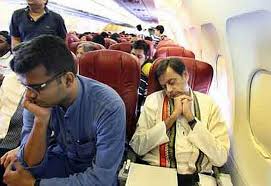

Tharoor’s tweet career shot into prominence rather controversially when ‘cattle class’ is how he dubbed Indian Airlines’ economy class. He made it clear that he had condescended to travel by it in ‘solidarity with all our holy cows’; but to which ‘holy cows’ he was referring always remained unclear. Did he mean to graze the Congress, which was once a ‘cow’? One could say it still is, considering how well its party persons are milking it: so was Tharoor having a dig at them? Or maybe he was thinking of that ubiquitous bunch of vagrants in our streets – and, by extension, those among us who similarly hang out endlessly in open spaces or travel daily by public buses….
If Tharoor only meant to send out a witty tweet, he must have amused his fans in the growing aspirational class across the nation, ever on the lookout for the antitheses of Lalus and Mayawatis. But what was humour for his friends indeed provoked furore among his foes. Furore came particularly when the minister targeted two ‘holy cows’ from our pantheon: Gandhi and Nehru. Didn’t he say people should be working on Gandhi Jayanti rather than staying at home? Far from hurting die-hard Gandhians it severely wounded commuting ‘cows’, infinitely worried about losing a comfy holiday!
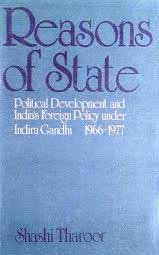 Close on its heels came criticism of Nehruvian foreign policy: here the feisty minister touched upon India’s use of force in Goa, as did one of India’s latter-day unholy cows, gutsy Arundhati Roy, who in sympathy with the Maoists blasted the country’s quickness in annexing lands and putting down popular movements. As the author of a scholarly study on Indian foreign policy, titled Reasons of State, Tharoor probably had many a reason for he stated; but then, cowed down by political bulls, he soon retracted his position. Whether the larger point went rather unnoticed or was deliberately underplayed is not for us to debate now (that can appropriately wait until December 2011); the fact is that argument did not catapult to the headlines as did his critical tweet lines on the newly-tightened visa norms: our minister had been left wondering whether they would actually ‘protect’ security or just make India a ‘less welcoming’ destination.
Close on its heels came criticism of Nehruvian foreign policy: here the feisty minister touched upon India’s use of force in Goa, as did one of India’s latter-day unholy cows, gutsy Arundhati Roy, who in sympathy with the Maoists blasted the country’s quickness in annexing lands and putting down popular movements. As the author of a scholarly study on Indian foreign policy, titled Reasons of State, Tharoor probably had many a reason for he stated; but then, cowed down by political bulls, he soon retracted his position. Whether the larger point went rather unnoticed or was deliberately underplayed is not for us to debate now (that can appropriately wait until December 2011); the fact is that argument did not catapult to the headlines as did his critical tweet lines on the newly-tightened visa norms: our minister had been left wondering whether they would actually ‘protect’ security or just make India a ‘less welcoming’ destination.

Here Tharoor came out as a champion of foreigners – mind you, not simply an ‘interlocutor’ but truly their ‘mediator’! Some months ago he had effectively split hairs but this time around, by his relaxed approach, external affairs flowed seamlessly into his personal affairs – and alas, Pushkar, his femme fatale, true to her name, pushed herself, so hard that ‘external’ and ‘personal’ turned ‘fatal’.

There was a time in the 1980s when I used to lap up the then international civil servant Tharoor’s monthly dispatches for our very own Gentleman magazine. Now it is the Opposition that laps up the fodder for controversy that he provides through his freewheeling tweets. But aside the fact that Tharoor’s spat with a sports honcho actually opened a can of worms, it is my hunch that he had no prior inkling of any sinister plot in the gentleman’s game. The IPL was only a side-show for the wordsmith Tharoor; all that he wanted was to quickly hit on a plot for a promising thriller.
The cricket competition controversy had all the makings of an irresistible reality show; the suave minister crafted the plot by personally creating the moment. Its prospective morphing into a creative work will be a classic case of art imitating life. In it its creator will have the last laugh: besides showcasing his flair for affairs of every hue, he will prove that his tweet, even if indiscreet, is creative. He who quit his UN job will show that he is no quitter; he who frittered away his MEA position will always on twitter stay. He who once lost his bid for UNO’s top post may one day become the secretary-general of an UTO, short for ‘United Twitters Organization’.
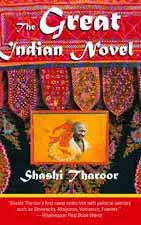
The only story that will remain to be told is of how this diplomat-turned-politician could be so un-diplomatic and politically incorrect. But then, in the tradition of The Great Indian Novel, that ironic adaptation of the Mahabharata that Tharoor penned from a 20th century viewpoint, he can well be expected to do so himself, pioneering a literary genre that may well be called the maha-chotta Bharatiya ‘Twitter Novel’! That will be the crowning glory for India’s foremost twittharoor.
(Herald, 17 May 2010)
Dona Teresinha, as I knew her
April 25, 2010Hugo Meneses,Jorge Meneses,Goa,Carlos Meneses,Fontaínhas,Renascença,Silvia Meneses,Panjim,Marlene de Noronha Meneses,FernandoTribute
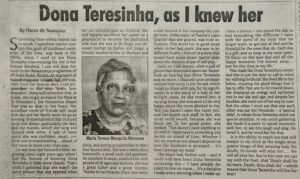
Something from within impels me to speak. I somehow cannot contain this gush of childhood memories of the time, way back in the 1970s, when I used to see Dona Teresinha criss-crossing the city in her Datsun Bluebird. I can still hear her voice in the Renascença programme of All India Radio, Panjim. An exponent of Indo-Portuguese culture that she was, right from her Lyceum days, I can picture her in the play ‘Barco Sem Pescador’. Many will remember that, at times, she singly animated the Mass at St Sebastian’s, the Fontaínhas chapel that was so dear to her heart. Her steadfast circle of friends will recall that she and her family never let go an evening of entertainment that included song and dance, particularly the fado and the mandó, which she sang and danced with verve. A lady of many parts, she was confident, smart, creative and forward-looking… ahead of her times in more ways than one.
Let me now fast forward a little, beginning some eight years ago, when I had the fortune of knowing Dona Teresinha a little more closely. That’s when I gathered that she wasn’t the stern person that she seemed when her car whizzed past us children. She had happily sacrificed her career as a pharmacist to become the dedicated wife that she was to Dr Hugo and devoted mother to Carlos and Jorge, a friendly mother-in-law to Marlene and Silvia, and doting grandmother to their four bouncy kids. She was a meticulous housewife, a good cook and gourmet. An excellent hostess, comfortable with people of all ages and stations, she was a great talker and a good listener. Thanks to her vivacity, there was never a dull moment in her company. Her joie de vivre, emblematic of Panjim’s Latin Quarter that she graced, was truly infectious: This stood her in good stead when, in her last years, she was in indifferent health – indeed in a state that would have some lesser mortal slide down the slippery slope of self-pity.
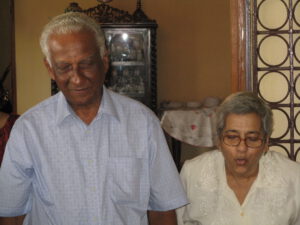
Early on 15th instant, after a pall of gloom had descended upon our household on hearing that Dona Teresinha was no more, I chanced upon an inspirational little story in the Herald, which I wish to share with you for its significance. It is the story of a lady in her twilight years. As she moved into a nursing home, she was seen to be very happy about the room allotted to her. ‘But you haven’t seen the room yet,’ said the health care staff. In fact, she never really would, because she was blind; yet, in her good poise, she replied, ‘That doesn’t have anything to do with it. Happiness is something you decide on ahead of time. Whether I like my room or not doesn’t depend on how the furniture is arranged… it’s how I arrange my mind.’
The brave lady further said – and it could well have been Dona Teresinha exclaiming this – ‘I have already decided to love my room… it’s a decision I make every morning when I wake up. I have a choice: I can spend the day in bed recounting the difficulty I have with the parts of my body that no longer work, or get out of bed and be thankful for the ones that do. Each day is a gift, and as long as my eyes open, I’ll focus on the new day and all the happy moments I’ve stored away… just for this time in my life.’
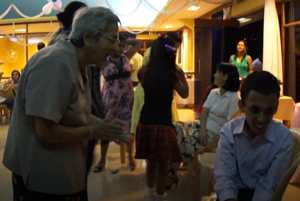
That reads like Dona Teresinha’s credo! And this is just the time to call to mind her edifying fortitude! She lived life to the fullest, enjoying the good things that it has to offer. Not one to be cowed down, she displayed an energy and optimism rare in our day and age; and despite her troubles, she went out of her way to comfort the other. I must say that one such other was our son Fernando – a ‘special child’, to whom Dona Teresinha doled out special attention. At any social gathering she made it a point to spend moments with him, to see him laugh and sing. He loved it, and he loved her for that.
It is this ability to reach out that will remain in my mind as the single most potent image of this amazing lady. No doubt, Fernando will miss her…. We will all miss her. But in her case we can say with the Poet, that ‘Death shall be no more. Death, thou shalt die’ – which means that Dona Teresinha will live forever!
(Herald, 25 April 2010)
Christmas as a state of being
December 1, 2009Ecological Christmas,Spiritual Christmas,Commercial ChristmasChristmas
Have you noticed that the singing or playing of carols before Advent hardly strikes a chord in our hearts? It’s almost like getting into a sweater on a hot summer’s day!
Hearing people say ‘It doesn’t feel like Christmas just yet’ makes one wonder what really gets in the way of enjoying a Christmassy feeling through the year. Yes, maybe we need a few props – the bright star, the colourful decorations, the rustic crib, the delicious home-made sweets, the joyful carols and the festive clothes… even the nippy weather – to get into the mood. But should our feeling, thinking, or being be governed by externals alone?
It’s time we realized that several agencies out there are vying for our time and attention: the merchants, who dangle their goodies before our eyes – pushing us into a ‘commercial’ Christmas; and now the environmentalists, too, wrangling about all that – pressing us into an ‘ecological’ Christmas. Besides, there are the age-old secularists, or say, those without any religious principles, for whom all is grist that comes to their mill…. They are all sources of great distraction for the young and old, the rich and the poor, the educated and the uneducated alike.
For our part, why not respond intently to our basic calling, which is to herald a ‘spiritual’ Christmas? By this we mean giving priority to the life of the spirit, rather than to material concerns; seeking to reconcile with God and to reach out to our neighbour; and giving to Christ the place that rightly belongs to Him in our hearts and minds. At Christmas we are called to truly light up the virtues of faith, hope and charity; it’s a special time to don God’s (and not Santa’s) thinking cap. And then, as we stop to contemplate the face of the Little Babe, Our Lord and Saviour, the worldly delights of a winter wonderland will vanish and overriding concerns about our Planet pale into insignificance.
If we have had fake Christmases in the past, let us put them behind us and move on; let us turn a new leaf, setting sights on a genuine Christmas and a radiant New Year. The tender spirit of December will not evaporate – and thus our world will be a better place – if Christmas isn’t limited to a day; if all mothers become like Mary and fathers like Joseph, and if we all model ourselves on Jesus of Nazareth….
And that’s probably when the singing or playing of carols will begin to strike a chord in our hearts right through the year!
(Editorial, The Stella Maris Bulletin, Vol. 3, No. 2, Dec 2009)
Obama's Nobelity
November 16, 2009Taliban,Noblesse Oblige,Lech Walesa,Alfred Nobel,Angela Merkel,Henry Ford,Nobel PrizeObama
‘Fighting for peace’ is a contradiction in terms. This can be resolved by ‘advocating’ or ‘standing up for’ peace. But, mind you, this is no semantic war; the use of words betrays a mindset. ‘Fighting for’ would suggest that peace doesn’t come to us naturally, that it eludes us, that we are peace mongers at best, using the ‘Atoms for Peace’ argument selectively, thus exposing human nature as a wolf in sheep’s clothing!
But this time around it is not so much about ‘fighting for’ peace; the big fight is about the Peace award. The irony: The Peace Prize as an instrument of disquiet! However, not so strange if we consider that Alfred Nobel instituted it to atone for inventing dynamite! But, curiously, today the world stands dynamited into bits and bytes of opinion, with a 1.4 million dollar question in its trail: Is Barack Obama being awarded for what he has done, is doing, or is going to do?
Has the Prize, citing Obama’s extraordinary efforts toward a nuclear arms-free world, international diplomacy, and cooperation between peoples, come ahead of time? Former Peace Laureate Lech Walesa blurted: “So soon? He has not yet made a real input. He is proposing… but he still has to do it all.” And Henry Ford would have said, “You can’t build a reputation on what you are going to do.”
But the point is that Obama has already built quite a reputation for himself. Through his model election campaign, in which ‘change’ was the buzzword, the man battled several odds on his ‘black’ road to the White House. And now nine months into the Presidency, he has created a new climate in international politics and, equally important, a new politics of climate change. Thanks to his world view, dialogue and negotiation have become choice instruments to resolve complex conflicts. His charisma has galvanized the world. To quote Angela Merkel, “Obama has in a short time managed to establish a new tone and a willingness to talk worldwide.”
Granting that the US President has still not been able to fully concretize the envisaged change, could we be as charitable as to recognize that concrete has a certain curing period? If we look at time future as a simple extension of time present, we shall no longer doubt that change is just round the corner. Obama has been an inspirational figure in the face of problems at home and abroad; he has made an impact on the world psyche, giving the people hope for a better future. Of course, he has now to live it out especially in the infernos of Iraq, Israel, Palestine and Afghanistan. His sagacity, intelligence, nobility of purpose and track record of sincerity and hard work will see him through it all. Yes, he can do it!
Some sections of the press have lampooned the choice of Obama for the Nobel Peace Prize; and the Taliban has even suggested that he should have instead won a ‘Nobel Prize for Escalating Violence and Killing Civilians’ (Wonder why they don’t institute a ‘Taliban Prize for Terrorism’!). On the other hand, many have realized that the Prize has come with a price: the pressure to perform, to show the results of his rhetoric, and to live up to the people’s expectations. In this sense, a Nobel Laureate is a modern-day nobleman: if Noblesse Oblige was the creed of the Nobility, responsible action should be the credo of the Nobelity.
Aside his noble intentions, did Obama have Nobel intentions? Members of the former slave race are ecstatic about being catapulted into the New Nobility, but the US President confessed, “To be honest, I do not feel I deserve to be in the company of so many of the transformative figures who’ve been honoured by this Prize.” For sure, he was thinking of Mother Teresa and Nelson Mandela; of Willy Brandt, who got the Nobel for his Ostpolitik; and Mikhail Gorbachev, who early in his own presidency received the accolade for perestroika and glasnost. But uppermost in his mind must have been his political guru Mahatma Gandhi, who was not honoured by the Nobel and so could do it no honour!
It did surprise many that, rather uncommonly, the Prize should have come in between the promise and the performance. Himself “surprised and humbled” by it, Obama put Nobelity in perspective, saying, “I do not view it as recognition of my own accomplishment…. Throughout history the Nobel Peace Prize has not just been used to honour specific achievements; it’s also been used as a means to give momentum to a set of causes. And that is why I will accept this award as a call to action, a call for all nations to confront the common challenges of the 21st century.”
By his rise onto the world stage, Barack Obama set new benchmarks not only for the international community and unwittingly for the Nobel as well!
(This version was published in Renovação, Vol. XXXVIII, No. 22, 16-30 Nov 2009, under the title 'Novel Nobel'; the same middle, titled 'Obama's Nobelity', with minor differences, was earlier published in Herald, 14 Nov 2009)
Mary, our Star and Haven
Christ is at the centre of our Faith; His glorious Resurrection is its bedrock. But none of this would be possible if not for Mary! It was through her that our Father in Heaven sent us His Only Son; it was through her that He worked out the history of our salvation. On her part, by willingly cooperating in God’s plan for estranged humankind, Mary was privileged to receive, in the words of Pope John Paul II, the “deepest knowledge of the mystery of God’s mercy.”
Mary is thus less off-centre than some of us may imagine. If Christ is the Sun, she is the Moon; she is a reflection of His radiance, in whose light we journey or sail through time. She is a sure guide for our steps. She prays for us sinners, now and at the hour of our death. She leads us to the Father and the Son in Heaven. For all this she is naturally deserving of our love and attention.
When we sing and pray “Be with us, Mary, along the way…” we can trust Our Lady, Queen of Heaven and Earth, to be to us that guiding star and safe haven all at once!
The Church proclaims – and we can see – Mary’s living and active presence in our day-to-day existence. She touches our lives; she who had a personal experience of the ups and downs in our valley of tears watches over us, like a true mother keen about her children’s welfare. She is our mother of mercy, our sweetness and our hope. She is our mother most faithful, who never leaves us unaided when we fly to her patronage or implore her help. She is our mother, holy, tender and kind, a shining model of faith, hope and charity.
Catholic Tradition invokes our Blessed Mother in myriad ways. Devotion to her is “intrinsic to Christian worship”, says Pope Paul VI; and it is expressed through liturgical feasts dedicated to her, and through Marian prayer, such as the Rosary. To our local faith community she is the Star of the Sea – not only because we are in physical proximity of deep and unknown waters, and our people are a sea-faring lot; but also because, on a universal plane, the sea is a symbol of life’s many perils through which we all need to be piloted to a safe haven.
When we sing and pray “Be with us, Mary, along the way…” we can trust Our Lady, Queen of Heaven and Earth, to be to us that guiding star and safe haven all at once!
(Editorial, The Stella Maris Bulletin, Miramar, Vol. 3, No. 1, October 2009)
Mary, our Star and Haven
October 1, 2009Stella Maris,Pope Paul VI,Star of the SeaMarian Devotion

Christ is at the centre of our Faith; His glorious Resurrection is its bedrock. But none of this would be possible if not for Mary! It was through her that our Father in Heaven sent us His Only Son; it was through her that He worked out the history of our salvation. On her part, by willingly cooperating in God’s plan for estranged humankind, Mary was privileged to receive, in the words of Pope John Paul II, the “deepest knowledge of the mystery of God’s mercy.”
Mary is thus less ‘off-centre’ than some of us may imagine. If Christ is the Sun, she is the Moon; she is a reflection of His radiance, in whose light we journey or sail through time. She is a sure guide for our steps. She prays for us sinners, now and at the hour of our death. She leads us to the Father and the Son in Heaven. For this she is naturally deserving of all our love and attention.
The Church proclaims – and we can see – Mary’s living and active presence in our day-to-day existence. She touches our lives; she who had a personal experience of the ups and downs in our valley of tears watches over us, like a true mother keen about her children’s welfare. She is our mother of mercy, our sweetness and our hope. She is our mother most faithful, who never leaves us unaided when we fly to her patronage or implore her help. She is our mother, holy, tender and kind, a shining model of faith, hope and charity.
Catholic Tradition invokes our Blessed Mother in myriad ways. Devotion to her is “intrinsic to Christian worship”, says Pope Paul VI; and it is expressed through liturgical feasts dedicated to her and through Marian prayer, such as the Rosary. To our local faith community she is the Star of the Sea – not only because we are in physical proximity of deep and unknown waters, and our people are a seafaring lot; but also because, on a universal plane, the sea is a symbol of life’s many perils through which we all need to be piloted to a safe haven.
When we sing and pray, “Be with us, Mary, along the way…” we can trust Our Lady, Queen of Heaven and Earth, to be to us that guiding star and safe haven all at once!
(Editorial, The Stella Maris Bulletin, Vol. 3, No. 1, Dec 2009)
State Control of Church Property: Unwarranted, Perilous and Counter-Productive
September 1, 2009Secularism,Catholic Church in Goa,Mazanias,Ordinance No. 2 of 1962,Portuguese Civil Code,Goa,State and Religion,Unique Goan Situation,Ganvkari,State Intervention,Portuguese Heritage,Fabricas,Church properties,Temple Boards and Trusts,Confrarias,Indian Union,Transparency and Accountability,Comunidades,State within a State,Catholic Heritage,CofresControversy,Law
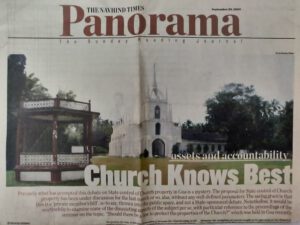
The proposal for State control of Church property has been under discussion, for the last month or so, alas, without any well-defined parameters. The saving grace is that this is a ‘private member’s bill’, so to say, thrown into the public space, and not a State-sponsored debate. Nonetheless, it would be worthwhile to examine some of the disquieting aspects of the subject per se, with particular reference to the proceedings of the seminar on the topic “Should there be a law to protect the properties of the Church?” which was held at the Goa International Centre on 28th July 2009.
Why now? – Precisely what has prompted this debate on State control of Church property in Goa is a mystery. At the said seminar, broad remarks and vague allegations were made about the functioning of the Church; there were some sweeping generalizations, too, mainly because the speakers failed to distinguish between the situation of the Church in Goa and the rest of India. As a result, none of them were able to convincingly state what is wrong with the status quo. If at all the present law regulating relations between the Church in Goa and the State is violative of the law of the land, as it was made out to be, how has the law been in operation for almost five decades? The fact of the matter is that the impugned law is not violative, because Ordinance No. 2 of 1962, promulgated by the President of India, provided for the continuance of that law and many others.
The theme of the seminar was artfully worded. It gave one the impression that the Church had solicited help and so the State was going to privilege her with a law protecting her properties from whosoever. While this was only too good to be true, it was also unnecessary, because the Church today is not seeking privileges any more than she rightfully has; what she eagerly desires, however, is conditions conducive to working peacefully within a secular framework.
Is ‘Secularism’ pliable? – Secularism would ideally mean total separation of Religion and the State, leaving no room for the latter’s intervention in the affairs of religious bodies. In a free society the State has to refrain from interfering with matters of a religious nature; its duty is to ensure that individuals can freely profess, practise and propagate their religion. In India, these rights can theoretically be abridged on grounds of public order, morality or health; the State can even make a law regulating or restricting any economic, financial, political or other secular activity associated with religious practice. But all this has to stand the test of “reasonable restrictions”, and it is incumbent upon the State to prove the need for change, lest the idea of secularism should turn pliable to the State’s whims and fancies.
Perils of State Intervention – One may tend to believe that State intervention is ‘safe’, considering that the rights of the minorities and the freedom of religion stand guaranteed by the Indian Constitution. One may not even feel threatened by some initial State involvement strictly limited to the secular part of a religious matter (say, the scale of expenses to be incurred by a religious institution in connection with rites and observances). In practice, however, such intervention can be an irritant or worse, an intrusion in the religious affairs of a body. Hence it must be ensured that the State intervenes only in extremis.
At any rate, is the Church in Goa a fit case for State intervention? And whatever the modalities of control sought to be exercised on the Church in Goa, citizens would, in the first place, doubt the State’s credentials for such a task! This is not to question the sovereignty of the State but only to emphasize that the State has almost always been a poor manager. For instance, by its intervention, a centuries-old, home-grown and much loved institution like the Ganvkari or Comunidades is in a shambles today. Such is the track record of the State that one can foresee that its control on Church property could result in gross mismanagement, appropriation of funds, encroachments, sale and alienation of lands, and the dismantling of the Church infrastructure, leading to a gradual demolition of the religion.
Political and administrative interference from the State is something that Boards and Trusts of some religious communities outside Goa have often complained about. Some faith communities were compelled by the civil law to have State-managed bodies appointed to run their affairs, because of certain circumstances related to the pre- and post-Independence history of their respective faiths. For them, State intervention became a necessary evil, whereas in Goa history took a different course. Therefore the argument that all religions, everywhere in India, must be on the same footing – or, in other words, suffer from the same malaise – is simply not tenable!
State within a State? – It was pointed out with gusto at the seminar that there cannot be a State within a State. Fair enough. But why cast a slur on the Church in Goa? Has the Church thrown a challenge or posed a threat to the secular State?
The ‘State within the State’ syndrome is perhaps true of some of our business houses. How else does one explain the lingering case of the decrepit River Princess? The concerned business house rules the waves, suggesting that they never will be slaves (with due apologies to ‘Rule Britannia!’). Indeed, they are a State within the State!
Or is it simply the magnitude of the Church’s holdings that makes her look like a State within a State? If yes, let this yardstick apply to our mineral ore exporters; they have to be held accountable for creating environmental problems – and what is more – while making profits on what is essentially State property! Will there ever be the political will to intervene in the internal affairs of these erring business houses?
In contrast, Church assets, mainly comprising donations and gifts from members of the community, have several onuses to be fulfilled. They are held by specific Trusts and their proceeds employed for charitable purposes, particularly education and health among the poorest sections and across faith communities.
Finally, is it the influence that the Church wields in public life that makes her look like a State within a State? Then the same objection should logically extend to the whole of the Fourth Estate!
And at this rate, we shall soon cease to be a democratic State!
Has the Church been above the law? – The world over, the internal affairs of the Catholic Church are governed by the Canon Law. Thanks to her international juridical personality, the said law is admissible in the court of law, since it is not at variance with the civil law. Hence the question “Can you allow any religious head to exercise his power without any regulation?” is malicious, and offensive to the head of the Church in Goa. While observing that “any activity ungoverned by law is lawlessness and would lead to arbitrariness” the speaker failed to recognize that India suffers miserably from lawlessness and arbitrariness despite a proliferation of civil and criminal laws (or sometimes because of it)!
So was it right to peremptorily accuse the Church of ‘lawlessness’? As an institution she enjoys a centuries-old tradition of respecting the canon, civil and criminal laws, and this has naturally made her members law-abiding citizens of the country and the world.
Unique Goan Situation – A look at the situation in Goa as a former Portuguese colony should provide answers to many a nagging question. It is well known that in 1961, in support of the many solemn promises that had been made earlier with regard to preserving Goa’s identity, many Portuguese laws were accepted by the Republic of India – for instance, the Portuguese Civil Code, now hailed by all communities in Goa as being fair and progressive and by the Union of India as a model for the country.
Now this has privileged the Hindu, Catholic and Muslim communities in Goa vis-à-vis their pan-Indian counterparts. And it is within this historical framework that their institutions have been functioning, be it the Confrarias, Fábricas and Cofres of the Catholics or the Mazanias of the Hindus. Now, should all these institutions that are unique to Goa change only because they do not conform to a pan-Indian model? If so, where is the principle of Unity in Diversity?
Therefore, the contention that the existing law in Goa regulating the relations between the Church and the State should be modified for the same reasons and to the same extent as it was modified in Portugal, as authoritatively stated at the said seminar, is unacceptable. Are we still tied to the apron strings of Portugal (the proverbial ‘colonial hang-over’) or conveniently blind to the fact that the Goan/Indian Christian situation is different from the Portuguese?
Transparency and Accountability – This is of the essence. The Catholic Church in Goa is equipped from within to ensure the same in temporal matters, the General Statutes of Confraternities and Rules and Regulations of Fábricas & Cofres being two main examples. There is an ever-increasing participation of both the clergy and the laity in all her institutions, which amounts to an internal system of checks and balances. There is a well-established hierarchy to oversee the same. Besides, the Church is subject to all the laws of the land, including the agrarian reform; her accounts are audited, like those of any other civil body, and she pays taxes to the State without any special exemptions. This time-tested organization has found acceptance the world over; so why all this nitpicking here?
Therefore, to allege (on behalf of the State) that the assets of the Church are being mishandled is a classic example of the pot calling the kettle black! Can the State legitimately claim that it utilizes public assets in a responsible manner? Isn’t mismanagement or embezzlement of funds the order of the day in the State? If stray occurrences of this nature inside the Church can justify State intervention, then the reports of chaotic happenings in the country surely call for declaration of a state of emergency!
The Church fulfils her legal duty of rendering to Caesar what is Caesar’s; she renders what is due, nothing less – so why should the State demand anything more?
First published in Renovação (Vol. XXXVIII, No. 17, 1-15 Sept 2009, pp 7-8) under the title 'State Control on Church Property: Unwarranted, Perilous and Counter-Productive'. Reprinted with permission by The Navhind Times (20 Sept 2009) as 'Church Knows Best', in 'Panorama', Sunday magazine, p. 1.
